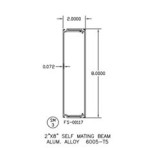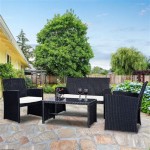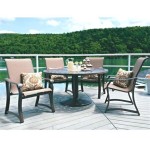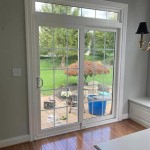Patio Fireplaces: A Comprehensive Guide to Outdoor Ambiance and Warmth
Patio fireplaces represent a significant enhancement to outdoor living spaces, offering a blend of aesthetic appeal and functional warmth. These installations extend the usability of patios, decks, and gardens into cooler months, providing a focal point for social gatherings and personal relaxation. The selection and installation of a patio fireplace require careful consideration of various factors, including fuel type, design, safety regulations, and maintenance requirements.
The evolution of patio fireplaces reflects advancements in materials, technology, and design preferences. Early iterations often consisted of simple brick or stone structures designed primarily for function. Modern patio fireplaces encompass a diverse range of styles, from traditional masonry units to contemporary stainless-steel models, accommodating diverse architectural styles and personal tastes. The increased availability of alternative fuel sources, such as propane and natural gas, has further expanded the options for homeowners seeking convenient and efficient outdoor heating solutions.
The integration of a patio fireplace into an outdoor living space can significantly enhance its value and appeal. Beyond providing warmth, a fireplace creates an inviting atmosphere, conducive to conversation and relaxation. The flickering flames and radiant heat foster a sense of comfort and tranquility, transforming an ordinary patio into a cozy retreat. The visual appeal of a well-designed fireplace can also serve as a focal point, enhancing the overall aesthetic of the outdoor space and increasing property value.
The selection process for a patio fireplace involves several key considerations. The first is determining the appropriate size and heat output based on the size of the patio and the desired level of warmth. Smaller patios may benefit from compact, portable models, while larger areas may require a more substantial built-in structure. Fuel type is another crucial factor, with options including wood-burning, propane, and natural gas. Each fuel type offers distinct advantages and disadvantages in terms of cost, convenience, and environmental impact. Finally, the design and style of the fireplace should complement the existing architecture and landscape of the property.
Fuel Type Considerations
The choice of fuel type significantly impacts the operation, maintenance, and environmental footprint of a patio fireplace. Wood-burning fireplaces offer a traditional aesthetic and a natural, crackling sound that many find appealing. However, they require a readily available source of firewood, careful storage to prevent moisture absorption, and regular cleaning to remove ash and soot. Wood-burning fireplaces also produce smoke, which can be a nuisance to neighbors and may be subject to local regulations.
Propane fireplaces offer a convenient and relatively clean-burning alternative to wood. Propane tanks are readily available and can be easily connected to the fireplace. Propane fireplaces ignite instantly, provide consistent heat output, and produce minimal smoke. However, propane tanks require periodic refilling or replacement, and the cost of propane can fluctuate depending on market conditions. Furthermore, propane fireplaces may require professional installation to ensure proper ventilation and safety.
Natural gas fireplaces offer the most convenient and efficient fuel option for homeowners with existing natural gas lines. Natural gas fireplaces connect directly to the home's gas supply, eliminating the need for fuel storage or refilling. Natural gas burns cleanly and efficiently, producing minimal smoke and ash. However, natural gas fireplaces require professional installation by a licensed plumber or gas fitter, and the cost of installation can be significant. Access to a natural gas line is a prerequisite for this option, which can limit its feasibility for some homeowners.
Design and Style Options
Patio fireplaces are available in a wide range of designs and styles to complement diverse architectural aesthetics and personal preferences. Traditional masonry fireplaces, constructed from brick, stone, or concrete, offer a timeless and classic look. These fireplaces can be customized to match the existing stonework or brickwork of the home, creating a seamless integration with the surrounding landscape. Masonry fireplaces are typically built-in structures, providing a substantial and permanent focal point for the patio.
Contemporary patio fireplaces often feature sleek lines, minimalist designs, and modern materials such as stainless steel, glass, and concrete. These fireplaces are designed to create a sophisticated and stylish outdoor living space. Contemporary models may include features such as integrated seating, built-in storage, and remote control operation. They often prioritize ease of use and low maintenance, appealing to homeowners seeking a modern and hassle-free outdoor heating solution.
Portable patio fireplaces offer flexibility and versatility, allowing homeowners to move the fireplace to different locations on the patio or deck. These fireplaces are typically smaller and lighter than built-in models, making them easy to transport and store. Portable fireplaces are available in a variety of styles and fuel types, including wood-burning, propane, and gel fuel. They are a suitable option for homeowners with smaller patios or those who prefer the option of moving the fireplace as needed.
Safety Regulations and Maintenance
Safety is paramount when installing and operating a patio fireplace. Local building codes and regulations often dictate specific requirements for fireplace placement, ventilation, and chimney height. It is essential to consult with local authorities and obtain the necessary permits before commencing installation. Proper clearance from combustible materials, such as trees, fences, and furniture, is crucial to prevent fire hazards. Regular inspections and maintenance are also essential to ensure the safe and efficient operation of the fireplace.
Wood-burning fireplaces require regular cleaning to remove ash and soot buildup in the firebox and chimney. Creosote, a highly flammable byproduct of wood combustion, can accumulate in the chimney and pose a significant fire hazard. Annual chimney inspections and cleaning by a qualified professional are recommended to prevent creosote buildup and ensure proper ventilation. The firebox should also be cleaned regularly to remove ash and debris, ensuring optimal combustion and heat output.
Propane and natural gas fireplaces require periodic inspections to check for gas leaks and proper burner operation. The gas lines and connections should be inspected regularly for signs of damage or corrosion. The burner nozzles should be cleaned periodically to remove debris and ensure consistent gas flow. It is recommended to have a qualified technician inspect and service the fireplace annually to ensure safe and efficient operation. Any signs of gas leaks, such as a sulfur-like odor or hissing sound, should be addressed immediately by a qualified professional.
Regardless of the fuel type, it is essential to follow the manufacturer's instructions for safe operation and maintenance. Always supervise the fireplace while it is in use and never leave it unattended. Keep flammable materials away from the fireplace and ensure that children and pets are kept at a safe distance. Consider using a spark screen or fire guard to prevent sparks and embers from escaping the firebox. By following these safety precautions, homeowners can enjoy the warmth and ambiance of a patio fireplace without compromising safety.
The market offers a variety of accessories to enhance the functionality and aesthetics of patio fireplaces. Fireplace screens or doors provide a barrier to contain sparks and embers, enhancing safety and preventing accidental fires. Grates or log racks elevate the firewood, improving airflow and combustion efficiency. Poker sets and ash shovels facilitate safe and efficient fire management. Decorative accessories, such as fire glass, ceramic logs, and mantels, can enhance the visual appeal of the fireplace and personalize the outdoor living space.
Proper site preparation is crucial for the successful installation of a patio fireplace. The foundation must be level and stable to support the weight of the fireplace. For built-in fireplaces, a concrete pad or reinforced base is typically required. For portable fireplaces, a level surface such as a patio stone or concrete slab is sufficient. Ensure adequate drainage to prevent water accumulation around the fireplace. Consider the prevailing wind direction when positioning the fireplace to minimize smoke exposure. Proper site preparation ensures the stability, safety, and longevity of the patio fireplace.
The integration of a patio fireplace into a larger outdoor living space can create a cohesive and inviting environment. Consider incorporating comfortable seating arrangements, such as outdoor sofas, chairs, and benches, to encourage relaxation and socializing. Add outdoor lighting to enhance visibility and create a warm and inviting ambiance. Incorporate landscaping elements, such as plants, trees, and shrubs, to soften the hardscape and create a natural setting. By carefully planning and integrating the patio fireplace into the outdoor living space, homeowners can create a functional and aesthetically pleasing environment for year-round enjoyment.

How To Build An Outdoor Fireplace Step By Guide Buildwithroman

Outdoor Fireplace Kits Stonewood S Cape Cod Ma Nh Ct

30 Outdoor Fireplace Ideas Cozy Fireplaces

Outdoor Fireplaces Round Grove S

Our Outdoor Fireplace Styled Snapshots

25 Outdoor Fireplace Ideas Fireplaces Fire Pits

Should I Install A Patio Fire Pit Or Fireplace In My Backyard

Outdoor Fireplace Design Ideas Getting Cozy With 10 Designs Unilock

Outdoor Fireplace Design Secrets From An Expert

Stone Age Manufacturing 24 Patio Series Outdoor Fireplace With Straight Lintel
Related Posts








